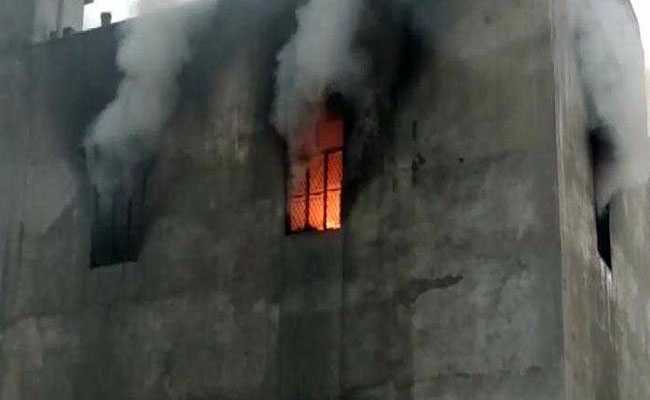
Add Bawana Industrial Area firecracker factory, just outside New Delhi, India, to the list of factory fire “tragedies”: Tangerang, Indonesia; Triangle Shirtwaist Factory, United States; Kader Toy Factory, Thailand; Zhili Handicraft Factory, China; Tazreen Fashions Factory, Bangladesh; Kentex Manufacturing Corporation; Philippines; House Technologies Industries, Philippines. The sacrificial pyre built of women’s bodies continues to grow and light up the night sky of global economic development. In this instance, on Saturday, an illegal but altogether known firecracker factory burst into flames. Seventeen people were burned or suffocated to death, ten women, seven men. Earlier in the day, three women workers protested “hazardous” working conditions. They complained that they couldn’t breathe because the air was so thick with gunpowder. They refused to work, took their day’s pay and left. As they left, they tried to persuade two other women to leave. The two women refused. They needed the money. A couple hours later, the building exploded.
The factory was registered as a plastics factory. In fact, it made gunpowder. The workers had no idea what they were producing, nor did they know the owners were in violation of the law. They knew the work was hard, the pay low, but it was a job. Until it wasn’t.
The workers’ stories, those who died and those who survived, are heartrending as they are familiar. The story of the factory is familiar as well. There were no fire safeguards, nor were their occupational safeguards. There was only one exit. The three women who left initially demanded masks, so they could breathe and continue to work. It was only when the manager refused that request that the three took their money and left.
The story of Bawana Industrial Area is the overarching story of national and metropolitan economic development. New Delhi is a congested, polluted city. In response, many factories have moved to so-called industrial parks just outside the city. In 2016, Bawana Industrial Area had around 18,000 industrial units. At last count, Bawana Industrial Area has 51,697 industrial units. They are almost never inspected. The licensing processes are a lethal joke: “In Bawana, industrial units range from drugs and pharmaceuticals, petroleum-based products, chemical products, rubber products. In the absence of any random inspection, many units flout industrial norms, even as work continues unabated.” You can get anything you want …
And now? The factory owner is detained and under investigation. Families, friends and neighbors keen and mourn. The world perhaps stares, for a moment, at the pictures of grieving mothers, and reads of the loss and sorrow. None of this is new or unforeseen. There is nothing exceptional about Bawana Industrial Area. The authorities expect the same conditions exist across New Delhi’s suburban industrial landscape. Industrial fire codes are prominent discussed, and every day workers, mostly women, entered a fireworks factory that had no proper exit and no fire safety equipment. That factory wasn’t a factory; it was a slaughterhouse. When the flames burst and the women workers’ bodies exploded, there was no accident. That fire was an indiscriminate and brutal slaughter of people, a massacre, and it was part of the plan. The shape of global capital development today is a burning pyre composed of women workers’ bodies. It lights the sky. We have never left the age of primitive accumulation, “and the history of this … is written in the annals of mankind in letters of blood and fire.”
(Photo Credit: NDTV)